SBAcoustics
Satori
TW29BN Beryllium-dome tweeter
Copyright 2017 © Troels Gravesen
I've used Beryllium domes in my reference speakers for the last 3 years
and I haven't come across anything that made to consider changes. That
said, any new speaker set-up should try a variety of tweeters to find
the best match to our midrange driver. There may be issues on frequency
response, phase and cabinet design that may require other choices. Last,
but not least, how a given tweeter blends sonically with our choice of
midrange driver is to be tried. This is something that cannot be
extracted from any data sheet. At the very end, prejudice may play a
part in our choice of tweeter. Some people just don't like hard-domes. I
may be wrong, but I think this prejudice has diminished over the last 10
years with the arrival of diamond and Beryllium domes. Former notion on
hard domes making "hard sound" seems gone and we even have some
extremely good aluminium domes like the ScanSpeak D2904/980000 and SBA
26ADC-C000-4 that rival Be domes.
Here we have the latest addition to the range of Be domes, the SBAcoustics TW29BN. At display at the Munich High End show last year and finally ready for market launch. And nice looking it is with its two-part aluminium face plate. Here are the features from the data sheet.
Download specs here.
What immediately appears from the data sheet is an unusual flat frequency response surpassing any other Be dome on the market. Most Be-domes have a declining frequency response above 15 kHz and quite often also an elevated response in the upper treble range, that is 5-10 kHz requiring some equalisation in the crossover - not always easy. Next thing we notice is an extremely high sensitivity, around 96 dB/2.8V/1 meter. SBA conservatively rate it 95 dB/2.8V, but data suggest 96 dB and so do my own measurements. This dome could be used in a very high-efficiency system - if we have the space for some serious bass drivers.
Based on the measuring data below, I'm looking forward to implementing these fine domes in future constructions. Distortion measurements suggest very capable down to 1.5 kHz.
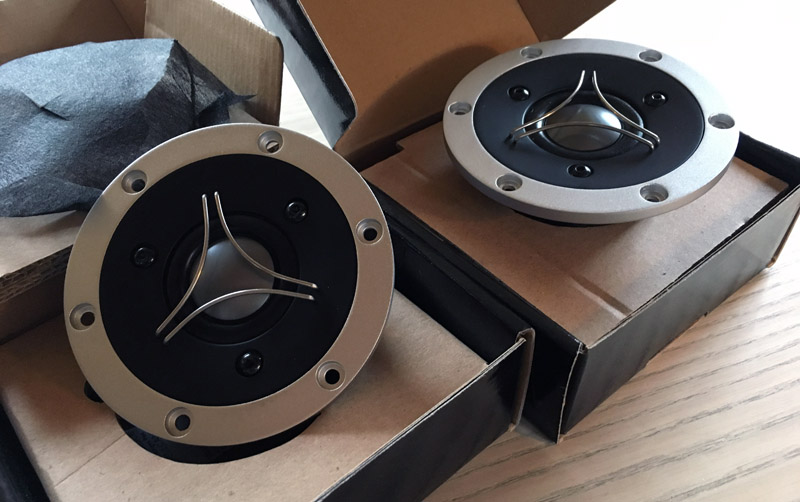
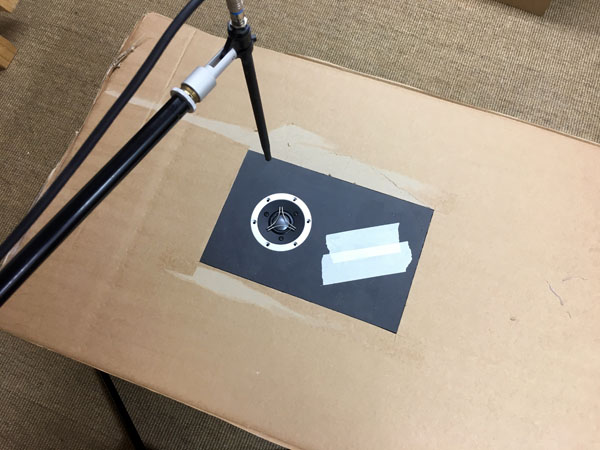
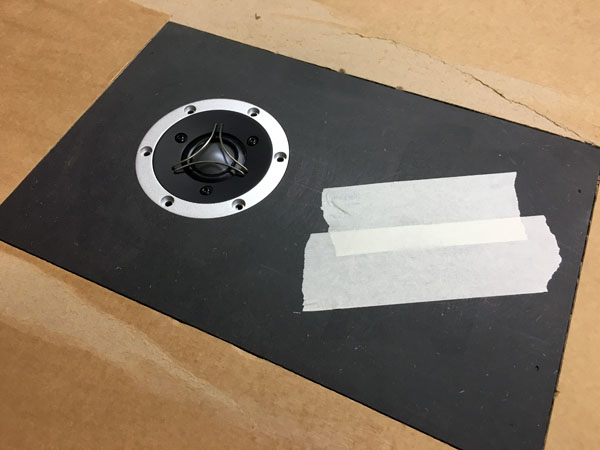
Initial testing of the domes.
The final measurements were done with he
dome mounted vertically to reduce and reflections from microphone stand.
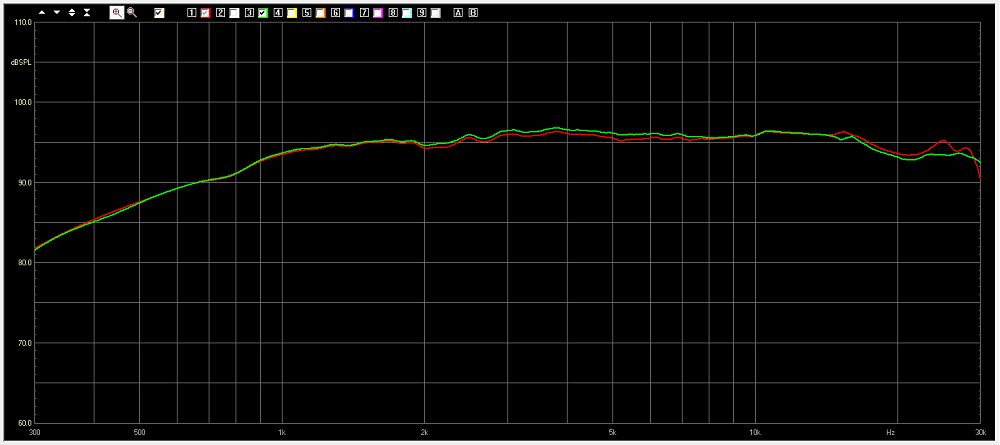
Frequency response of unit 1 and 2, normalised for 2.8 volts, 1 meter.
1/12 octave smoothing.
Some healthy 95 dB sensitivity, rather 96 dB.
An unusual flat response from 1-20 kHz.
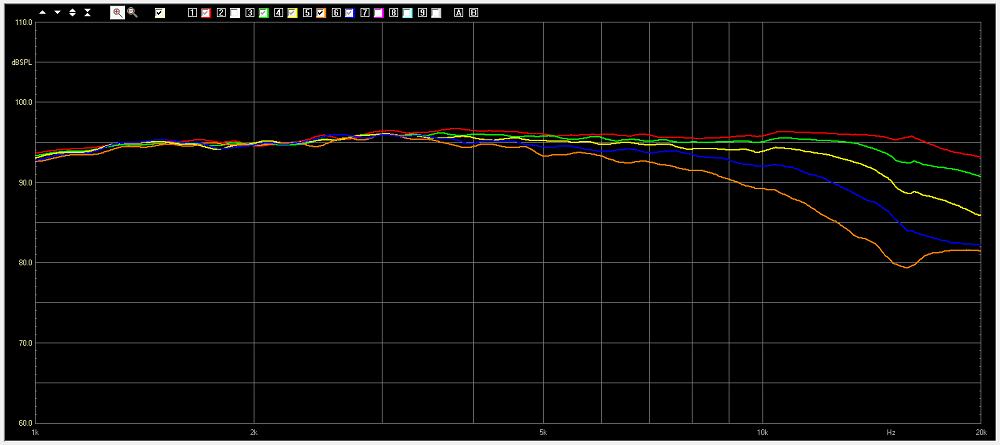
Dispersion at 0, 10, 20, 30 and 40 deg. off-axis.
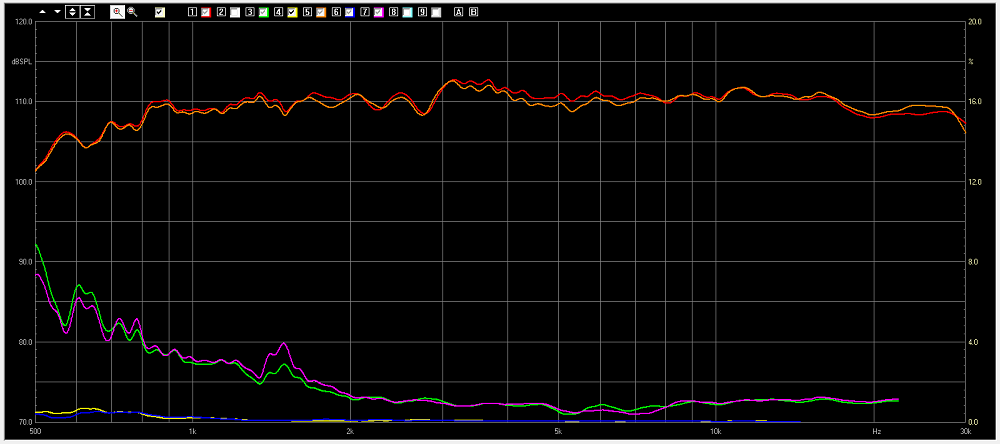
Distortion of unit 1 and 2, measured at 2.8V input.
Unit 1: Red, green (2nd harm.) and blue (3rd harm).
Unit 2: Orange, purple (2nd harm.) and yellow (3rd harm.)
What can we say? Doesn't get much better than this. Very similar to
ScanSpeak 7140 Be dome.
Had to put on ear protection during the measurements, very sensitive
indeed!
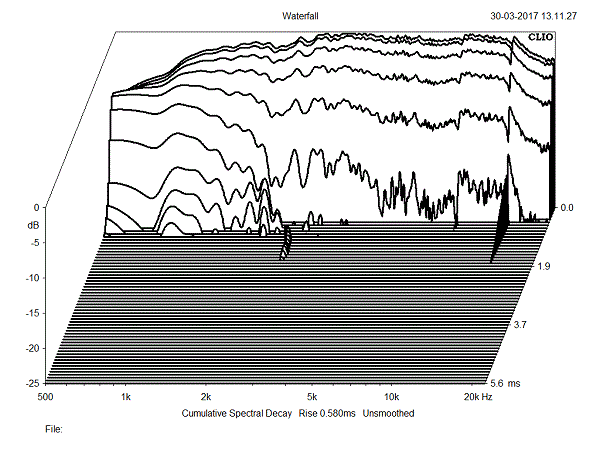
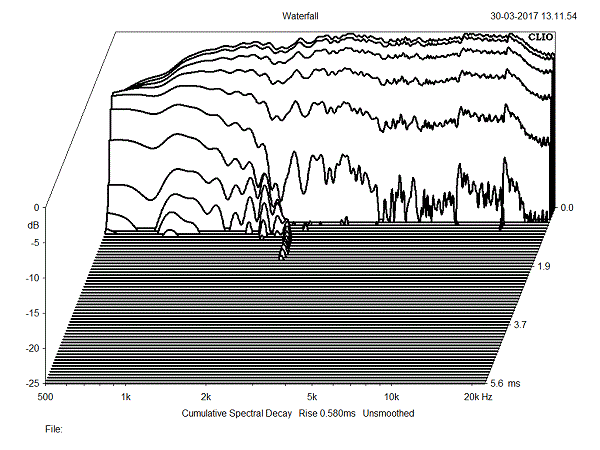
Cumulative spectral decay from unit 1 and 2.
No apparent troublesome resonances anywhere. Small glitch around 16-17
kHz, nothing to worry about.